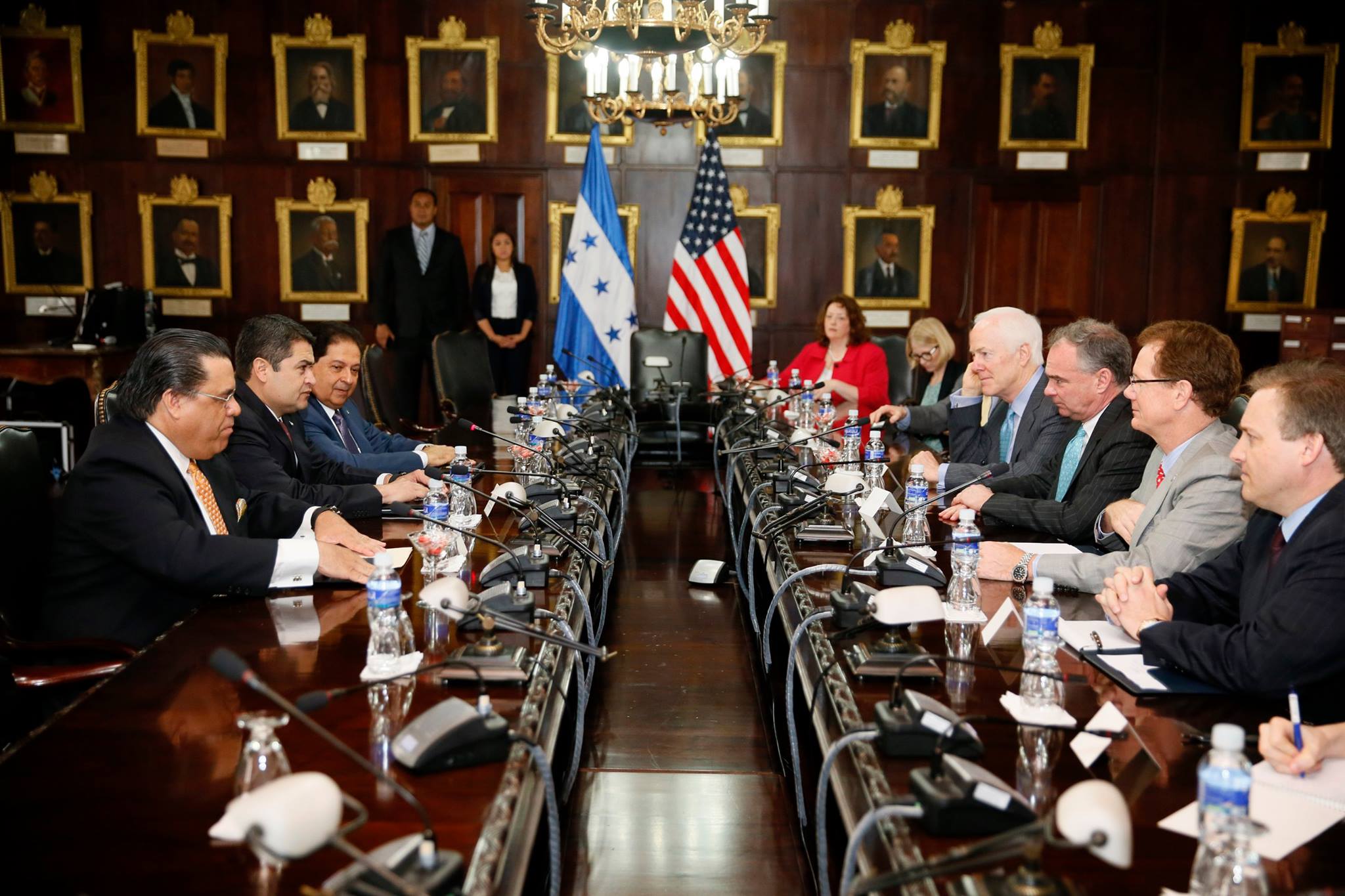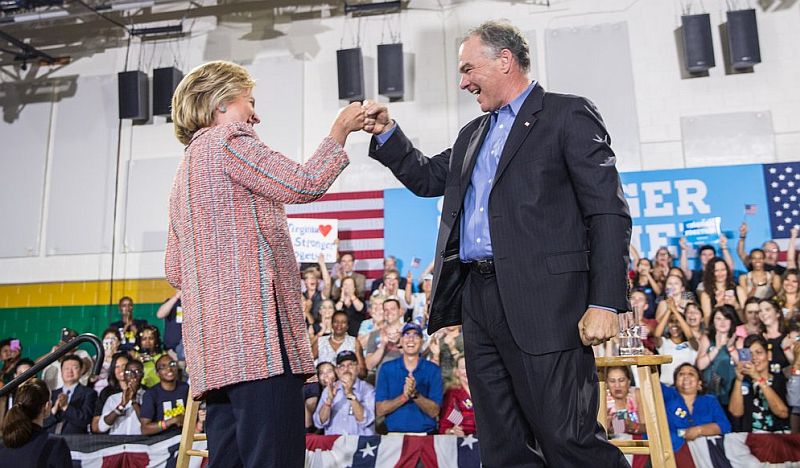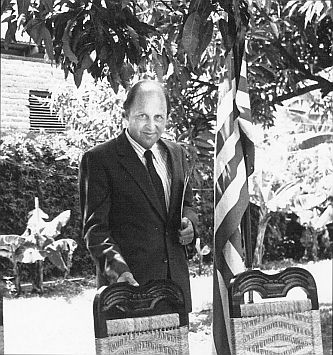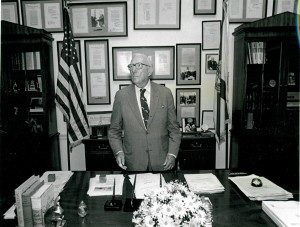Citizen Kaine: Is it all a Jesuit ruse?
Tim Kaine’s Unlikely Biography
by Daniel Hopsicker
Tim Kaine isn’t shy about trading on his year in Honduras as a Catholic missionary.
Accepting the V.P. nomination, he said, “My faith is my North Star for orienting my life.” He had gone to a Jesuit high school, he explained, with the motto “men for others.” It led him to volunteer as a missionary in Honduras.
“Aprendí los valores de mi pueblo: fe, familia y trabajo. Los mismos valores de la comunidad latina aquí”—I learned the values of my town: faith, family and work. The same values of the Latino community here.”
It’s a story he’s been telling a long time.
While running for the Senate in Virginia, Kaine aired radio ads detailing his experience as a missionary. He became the first U.S. senator to deliver a speech on the floor entirely in Spanish, which he learned in Honduras.
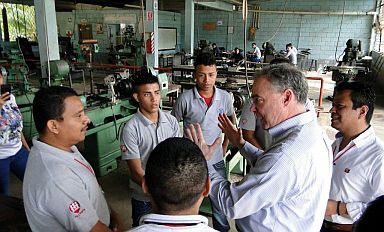 “As somebody who lived and re-visits Latin America,” he told The Washington Post, “I have a real passion and attachment to the immigrant story—latinos y otros, porque hay un gran número de asiáticos y otros en Virginia.”
“As somebody who lived and re-visits Latin America,” he told The Washington Post, “I have a real passion and attachment to the immigrant story—latinos y otros, porque hay un gran número de asiáticos y otros en Virginia.”
But, as biography, it’s not merely unsatisfying. It’s unlikely.
A 21-year old Harvard Law School student spending 1981 in Honduras as a Jesuit volunteer is as absurd as an English tutor parachuting before D-Day into Normandy to teach French children when to use “their” and when to use “they’re.”
It doesn’t pass the smell test.
The Tim Kaine Story
Distilled from various sources, here’s how Kaine’s sojourn in Honduras is described:
Tim Kaine attended an all-boys Jesuit high school, became student government president, joined spring mission drives to fund Jesuit activities in Honduras. He zipped through college in three years and headed to Harvard University Law School. There he heard “a small, still voice” asking him why he was in such a hurry. “Something in me said to take a year off.”
Kaine wrote to some Catholic missionaries asking if he could volunteer for a year to help them. In exchange for meals and a place to sleep, he headed to the second-poorest country in the western hemisphere. He said in a C-Span interview that he needed to “step away from the treadmill” to “decide on my path in life.”
“I taught kids how to be welders and carpenters. I wouldn’t be in public service today had I not had that experience as a young man.”
“I do what I do for spiritual reasons,” Kaine told C-SPAN. “I’m always thinking about the momentary reality but also how it connects with bigger matters of what’s important in life.”
Serving church & family
If you accept the story at face value, Kaine comes across—or did to me, anyway—as down to earth, normal, a nice guy. If you have doubts, you may find his sanctimony a bit much. But the wrenching changes in Honduras occurring at precisely the same time Kaine’s supposedly hunkered down in a machine shop in El Progreso make his story implausible.
“I think of El Progreso everyday. The people, aside from my family, are the most important in shaping who I am today. Since returning from Honduras 25 years ago, I have worked hard to serve my church, family, community, city and state.”
He describes his time in Honduras as the most important year of his life, an experience so profound he and his wife celebrated their 20th wedding anniversary visiting the Jesuit school where he taught a handful of students.
“My mentor there taught me about “andando con la gente”-“walking with the people,”he told the Democratic Convention. “I came back with new lessons in humility and service, and I resolved to devote my talent and energy to helping others.”
“Soy católico,” he added — I’m Catholic — the religion of most Hispanics in the U.S.
Speaking of himself and Hillary Clinton, he said, “We share this basic belief. It’s simple. Do all the good you can and serve one another. Pretty simple.”
Why doubts have been raised
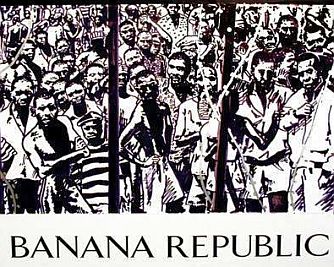 Honduras is—literally—the original banana republic. American short story writer O. Henry was hiding out there in the capital in 1905, on the run from Texas authorities on charges of embezzlement, and wrote a book of short stories. The phrase “banana republic” was born.
Honduras is—literally—the original banana republic. American short story writer O. Henry was hiding out there in the capital in 1905, on the run from Texas authorities on charges of embezzlement, and wrote a book of short stories. The phrase “banana republic” was born.
So, there’s that. More importantly, while Kaine was in Honduras a whirlwind descended on that little-visited country: a huge American military presence which ballooned overnight— courtesy of the Reagan Administration— determined to turn the tide of leftist revolutionaries in Nicaragua, El Salvador, and Guatemala.
While Kaine taught a handful of students carpentry and welding, United States military aid to Honduras went from $4 million to $282 million in just a few years.
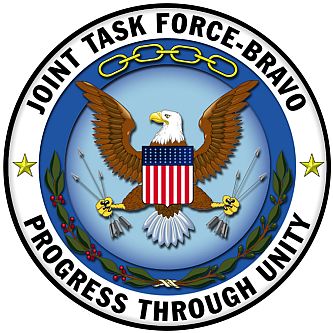 Joint Task Force Bravo poured bulldozers into Honduras. They rolled off huge military transport planes and roared off into the countryside, helping American military engineers build roads, bridges, bases, airstrips, supply depots, and infrastructure, and turning the country into a staging area for troops entering combat in Nicaragua against the dread Sandinistas.
Joint Task Force Bravo poured bulldozers into Honduras. They rolled off huge military transport planes and roared off into the countryside, helping American military engineers build roads, bridges, bases, airstrips, supply depots, and infrastructure, and turning the country into a staging area for troops entering combat in Nicaragua against the dread Sandinistas.
So far, nothing from Kaine on any of that. He was there, but apparently missed it all.
American troops poured in for saber-rattling maneuvers to intimidate the Sandinistas. American intelligence agents trained Hondurans in surveillance, interrogation, and torture as the country went from a humid backwater to a hub for all the intrigue money can buy.
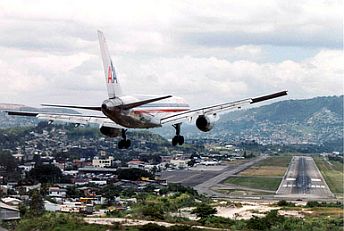 Perhaps not coincidentally, Honduras became known as the Lebanon of Central America, the biggest drug marketplace the world had ever known.
Perhaps not coincidentally, Honduras became known as the Lebanon of Central America, the biggest drug marketplace the world had ever known.
“We turned the whole damn country into an American battleship,” lamented the chairman of the House’s Western Affairs Subcommittee later. “We created the ‘USS Honduras.’”
Tim Kaine saw nada. Was he busy teaching welding? Or was something else going on?
Timmy wasn’t sleeping on the floor
 When Honduras was bribed and bullied by the US to host the Contras, the man at the center of the circus was US ambassador John Negroponte, who arrived in Honduras while Tim Kaine was there.
When Honduras was bribed and bullied by the US to host the Contras, the man at the center of the circus was US ambassador John Negroponte, who arrived in Honduras while Tim Kaine was there.
Negroponte has been widely accused of turning a blind eye to atrocities by the Honduran military, but claims to be unaware of human rights abuses during this time. When he was appointed head of national intelligence by George W Bush in 2005, one journalist wrote, “Each morning he (Negroponte) should have no difficulty spotting a terrorist.”
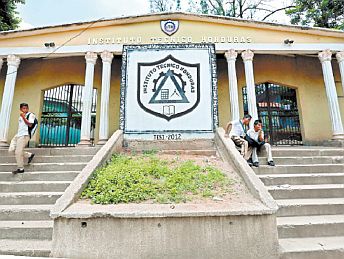 Remember Kaine’s description of volunteering “in exchange for meals and a place to sleep?”
Remember Kaine’s description of volunteering “in exchange for meals and a place to sleep?”
Timmy slept in a gated community with restricted access, and grounds that included offices, residences, a swimming pool, a country club and part of a golf course. A subsidiary of United Fruit Co. had generously sold their company retreat to the Jesuits for its headquarters.
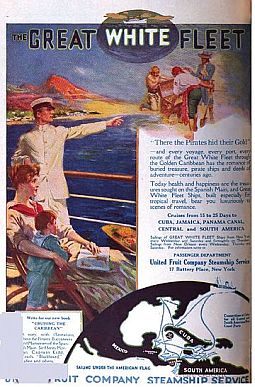 Campesinos who visited the luxurious complex knew of the longstanding relationship between United Fruit and the Church, which regularly accepted donations from the company. Priests were granted free passage aboard its vessels. The company and the religious order had a cooperative bond.
Campesinos who visited the luxurious complex knew of the longstanding relationship between United Fruit and the Church, which regularly accepted donations from the company. Priests were granted free passage aboard its vessels. The company and the religious order had a cooperative bond.
United Fruit became United Brands and today does business as Chiquita. Curiously enough, corporate intrigue continues to this day; the company is often so tightly intertwined with official U.S. foreign policy that the two become indistinguishable.
Honduras becomes “The Trampoline”
When the drug business took off in earnest in the 1970’s, the Caribbean coast of Honduras, including San Pedro Sula and El Progreso, became a full-service oasis on the drug trafficking turnpike, serving hot food and aviation fuel 24 hours a day. Honduras became, and remains, a major off-ramp, located a comfortable distance for a twin-engined plane to fly from Colombia on a full tank of gas, refuel, and fly on to Florida.
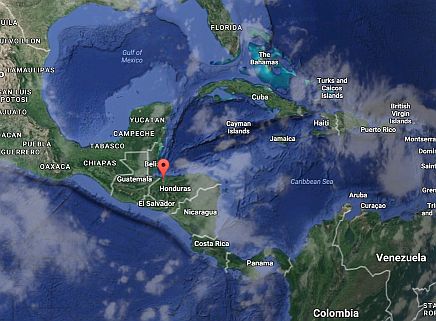 Pilots call it the Trampoline. Planes touch down, gas up and bounce back into the air for the second half of their flight to the U.S. The Honduran Army made possible the blizzard of cocaine that transformed millions of American lives during the 1980’s.
Pilots call it the Trampoline. Planes touch down, gas up and bounce back into the air for the second half of their flight to the U.S. The Honduran Army made possible the blizzard of cocaine that transformed millions of American lives during the 1980’s.
The grateful leaders of the Honduran military wouldn’t have it any other way. They took a cut on each flight.
They still do.
“These days the pushiest businessmen are those who sell another agricultural product aimed at American consumers: cocaine,” reported a recent story in The Economist. “Honduras’s position on the trafficking route from South to North America means that most of the cocaine bound for the United States passes through its borders, and the violence and corruption that come with the trade.”
The more things change…
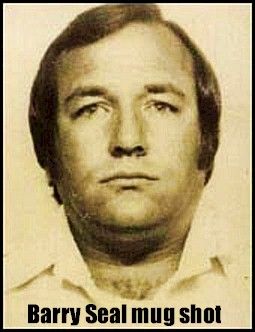 Longtime CIA pilot Barry Seal landed his twin-engine Merlin on the Honduran island of Roatan in December 1979. On his plane was, in those more innocent times, considered a huge load: 40 kilos.
Longtime CIA pilot Barry Seal landed his twin-engine Merlin on the Honduran island of Roatan in December 1979. On his plane was, in those more innocent times, considered a huge load: 40 kilos.
The bust made the front page in the capital of Tegucigalpa. Newspapers reported Seal had been been caught red-handed with 17 kilos of cocaine. Some Honduran General must have smiled when he read that figure, and patted a suitcase loaded with the missing 23 kilos.
Seal was busted because he’d landed his twin-engine plane in the immediate aftermath of a military coup overthrowing then-Honduran President Juan Alberto Melgar. He was caught off guard.
“Barry paid off the wrong people,” a long-time Seal associate told me. “He went to Ecuador to pick up the cocaine, and when he came back to Honduras a whole new set of Generals that he hadn’t bribed were running the show.”
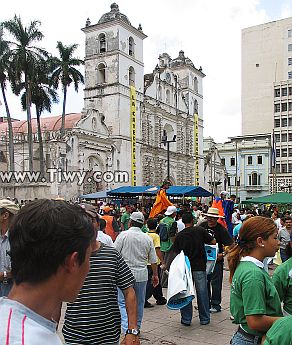 Barry Seal was released from prison into the chilly morning air of the Honduran capital, which sits on a plateau 3000 feet above the jungle floor just as Tim Kaine arrived near the end of 1980.
Barry Seal was released from prison into the chilly morning air of the Honduran capital, which sits on a plateau 3000 feet above the jungle floor just as Tim Kaine arrived near the end of 1980.
The newly-freed pilot casually walked down cool quiet streets in the peaceful Spanish Colonial center of Tegucigalpa. Shoeshine men and lottery-ticket vendors moved unhurriedly across the cobblestones, setting up vending carts beneath huge shade trees offering fresh chunks of pineapple, slices of coconut, and the ever-present bananas.
Also in-country was Tim Kaine.
The more they stay the same
 30 years later, the same situation faced by Barry Seal took down another big drug kingpin, Syrian-born Walid Makled, 43, characterized by the DEA as “one of the two or three top narcotics traffickers in the world.”
30 years later, the same situation faced by Barry Seal took down another big drug kingpin, Syrian-born Walid Makled, 43, characterized by the DEA as “one of the two or three top narcotics traffickers in the world.”
A 19-passenger Jetstream airliner arrived over Honduras from Venezuela just as a constitutional crisis erupted. The streets of Tegucigalpa, and other urban centers, erupted in violent  protest, the army went on high alert, and moved in to quell the demonstrations.
protest, the army went on high alert, and moved in to quell the demonstrations.
It was the kick-off to a slow-rolling coup which culminated with troops rousting the President out of bed in the middle of the night, unceremoniously dumping him in his pajamas on a plane out of the country.
Previous arrangements, like Makled’s, were no longer considered binding.
“People came outside to watch the show”
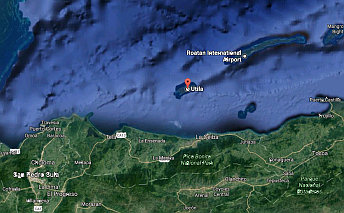 An Oct 31 2011 AP story described Honduras as “the cocaine trafficking hub of the western hemisphere.” “Honduras is the number one offloading point for cocaine on its way to the U.S.,” the article stated.
An Oct 31 2011 AP story described Honduras as “the cocaine trafficking hub of the western hemisphere.” “Honduras is the number one offloading point for cocaine on its way to the U.S.,” the article stated.
Makeld’s Jetstream went down on Utila, a few miles from where Barry Seal’s plane had been busted 30 years earlier on the nearby island of Roatan. The Jetstream had been circling in the dark over the island, and crashed attempting to evade a DEA plane trying to force it down.
“There was a large American airplane that sounded like it could be a C-130, or a P-3,” said a source. “Later I learned it was from the DEA, and had been tracking the drug plane since it was spotted approaching from over the Gulf of Mexico.”
Local island residents watched the whole thing go down.
“It happe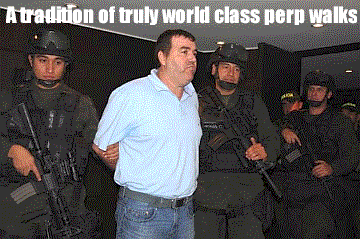 ned on a Saturday night, and people came outside from every bar in town to watch the show,” explained one resident. “The American plane was lit up, and had a spotlight pointed at the Jetstream, which was running without lights. It was pretty clear that the pilot was desperately trying to find a way out. The whole thing went on for at least a couple of hours.”
ned on a Saturday night, and people came outside from every bar in town to watch the show,” explained one resident. “The American plane was lit up, and had a spotlight pointed at the Jetstream, which was running without lights. It was pretty clear that the pilot was desperately trying to find a way out. The whole thing went on for at least a couple of hours.”
Makled’s indictment in the Jetstream bust was briefly important to DEA’s efforts at the time to paint his fellow Venezuelan Hugo Chavez as the world’s next Manuel Noriega. In the event, cancer did the trick.
Remember Crooked Dusty Foggo, the CIA’s No 3 Man?
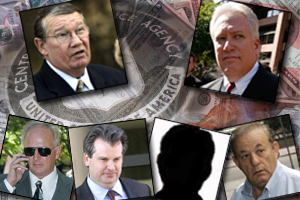 Kyle “Dusty” Foggo was a CIA Agent convicted of fraud and sentenced to federal prison who had spent several years in Honduras in the early 1980s.
Kyle “Dusty” Foggo was a CIA Agent convicted of fraud and sentenced to federal prison who had spent several years in Honduras in the early 1980s.
A “Washington Babylon “column by Ken Silverstein in Harper’s magazine called“Dusty Abroad” retailed information on his time there. “The Agency was using the country as a base both to support the Nicaraguan contras and for a variety of other covert programs in Central America.”
The article referenced Foggo’s involvement in “a brisk hooker trade,” revealing that Foggo, had been a regular at the Maya Hotel and casino. So had Barry Seal.
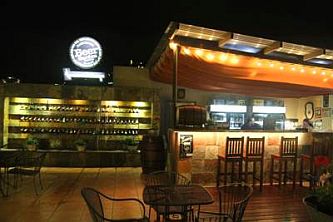 A steely-eyed former NSA operative in Central and South America named Russ Eakin told me, “I first met Barry Seal in the lobby of the Hotel Maya in Tegucigalpa, Honduras, back in the late ‘70’s. Barry was good friends with the owners of the hotel, which was the center of intrigue in Central America back then. And just by looking at each other, we both knew what the other was doing, although neither of us stated it openly to the other when we met, or for a long time afterwards.”
A steely-eyed former NSA operative in Central and South America named Russ Eakin told me, “I first met Barry Seal in the lobby of the Hotel Maya in Tegucigalpa, Honduras, back in the late ‘70’s. Barry was good friends with the owners of the hotel, which was the center of intrigue in Central America back then. And just by looking at each other, we both knew what the other was doing, although neither of us stated it openly to the other when we met, or for a long time afterwards.”
Barry Seal and Dusty Foggo were in the same place at the same time. So was Tim Kaine.
What about the Jesuits?
 “Five seminarians freed in gunrunning case,” was the headline of a United Press International wire story on July 14, 1981, which revealed that Jesuit seminarians, jailed in Honduras for smuggling guns and subversive literature, had been expelled from the country.
“Five seminarians freed in gunrunning case,” was the headline of a United Press International wire story on July 14, 1981, which revealed that Jesuit seminarians, jailed in Honduras for smuggling guns and subversive literature, had been expelled from the country.
The seminarians arrived in Mexico City after being held incommunicado for 72 hours by police in Honduras, who arrested the seminarians after searching their luggage during a stopover on a flight from Managua to Mexico City, said a Jesuit spokesman, who did not specifically deny the charges. The seminarians were in transit to Mexico and not entering Honduras, Jesuits charged. Honduran authorities had no right to search their luggage.
The incident was one in a series of conflicts between government authorities in Central America and Catholic Church leaders. Church officials in Tegucigalpa accused the government of preventing foreign missionaries from entering the country. The Honduran government said it was simply tightening rules for all immigrants.
When a new American ambassador arrived in 1980, he was horrified by what he saw:Honduras had become the base for a marauding army of anti-Sandinista fighters, and a platform for American military maneuvers in which thousands of soldiers and paratroopers staged mock invasions. Guerrilla war raged across all three of its borders.
It was a dangerous place for dissidents. The ambassador, who sent a cable to Washington saying he was “deeply concerned at increasing evidence of officially sponsored assassinations,” was soon recalled.
John Negroponte became the new sheriff in town. And for the next two decades Honduran history was as dark and scary as the bar at the Maya Hotel at midnight.
In 1995, The Baltimore Sun published an extensive investigation of U.S. activities in Honduras, and quoted an ex-Honduran congressman.
“Their attitude was one of tolerance and silence. They needed Honduras to loan its territory more than they were concerned about innocent people being killed.”
Claude Pepper, The Jesuits, & the war against the Sandinistas
There is copious evidence of Jesuit cooperation with the U.S. during the reign of Pope John Paul II. In a Dec 11, 1986 Washington Post story, for example: “Heady Days for Newest Rhodes Scholars,” hinted at a link between Jesuits and secular concerns. At Georgetown University, a Jesuit school, three students were selected to become Rhodes Scholars, including one working for Tim Kaine’s outfit, the Jesuit Volunteer Corps.
That’s a lot of Rhodes Scholars for a small school. Today John Negroponte teaches at Georgetown University. He attended Harvard Law as a student. So did Tim Kaine.
When, where and how did Tim Kaine and John Negroponte first meet?
But the story I like best which illustrates Department of Defense links to the Jesuits in Honduras involves Florida Congressman Claude Pepper, a man who—even back in the 80’s—was considered an old pol.
Legendary FBI director J. Edgar Hoover had collected details about Claude Pepper, who occasionally criticized the Bureau, in an effort to link him to corruption, reported the Jun 30, 1991 St. Petersburg Times.
A diamond bracelet recovered in a taxi
Surprised, a field agent in the FBI’s Washington office wrote Hoover after learning Pepper had criticized the Bureau. FBI Agents once recovered a diamond bracelet of Mrs. Pepper’s which she lost in a Washington taxicab, the agent reminded Hoover. Pepper had even written Hoover a thank-you note.
“I shall always be most grateful to you and the Federal Bureau of Investigation for the exceedingly kind and efficient service which you rendered to me and to Mrs. Pepper.”
At the bottom of the note, reported the paper, Hoover added his own sentiment: “Pepper has to serve his masters, the Florida politicians and criminals.”
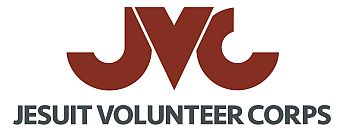 After his wife passed away, Pepper formed the Mildred and Claude Pepper Foundation to “promote policies and programs which will improve health, provide economic opportunity and contribute to social justice for all Americans.”
After his wife passed away, Pepper formed the Mildred and Claude Pepper Foundation to “promote policies and programs which will improve health, provide economic opportunity and contribute to social justice for all Americans.”
It was a broad mandate, which the Foundation exceeded as soon as Pepper was dead. The U.S. Congress appropriated $10 million to the foundation from the budget of the Department of Defense, “a direct and unrestricted grant to support the purposes of the foundation and to serve as a memorial to Pepper.”
 During the war against the Sandinistas, the foundation spent some of the money for a grant to the Association of Jesuit Colleges and Universities in Central America.
During the war against the Sandinistas, the foundation spent some of the money for a grant to the Association of Jesuit Colleges and Universities in Central America.
Said the executive director of the National Committee for Responsive Philanthropy in Washington,”I’ve never heard of government money used to create a foundation like that.”
Tim Kaine and John Negroponte
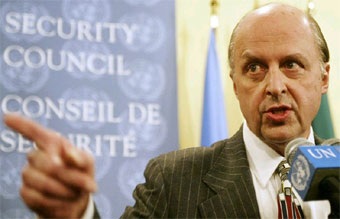 Most people who lived or worked in Honduras during the 1980s saw a nation spiraling into violence and infested by paramilitary gangs that kidnapped and killed with impunity. Negroponte always refused to acknowledge this.
Most people who lived or worked in Honduras during the 1980s saw a nation spiraling into violence and infested by paramilitary gangs that kidnapped and killed with impunity. Negroponte always refused to acknowledge this.
A handful of entrenched families control the government in Tegucigalpa. The June 2009 military coup, supported by Hillary Clinton as Secretary of State, toppled democratically-elected President Manuel Zelaya and threw the doors wide open. The government is corrupt from top to bottom. The judicial system is broken. According to the vice president of the Honduran Congress, 40 percent of the country’s police are involved in organized crime.
“The world needs ‘islands of mercy,’” Tim Kaine told the Feb 28, 2015 Richmond Times Dispatch. “Islands of mercy in the midst of a sea of indifference, from the poorest barrio to the altars of our churches and the halls of government.”
Islands of mercy are one thing. Passing a poisoned chalice is something else.
Did U.S., Jesuit presence help or hurt?
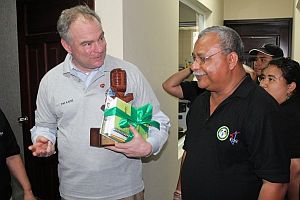 Czech writer Milan Kundera said, “The struggle against power is the struggle against forgetting.”
Czech writer Milan Kundera said, “The struggle against power is the struggle against forgetting.”
Latin America is the world’s most violent region. Today Honduras is notorious for having the highest murder rate in the world. And few cities are as dangerous as San Pedro Sula, six miles from the Jesuit operation in El Progreso. More people are killed per capita there than even Mexico’s Ciudad Juárez, known as “Murder City.”
It is also one of the most dangerous places to be a journalist: At least 23 killed in the past three years. According to the World Bank, 60 percent of the population lives in poverty, a statistic outmatched in the Western Hemisphere only by Haiti.
“Two memories still haunt me,” wrote journalist and screenwriter Paul Laverty of his time there. “We got a report one night of a Contra attack on a cooperative. In the chaos, a young woman was shot and couldn’t run. Her parents somehow got away to the safety of a trench, only to hear the Contras in the near distance torturing their daughter. They found her dead in the ditch the next day with her breasts cut off. Incidents like this peppered the entire war.”
What does Tim Kaine say? Maybe someone should ask him.
___
http://www.madcowprod.com/2016/07/31/tim-kaines-unlikely-biography/
